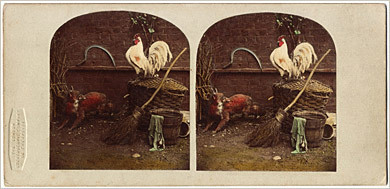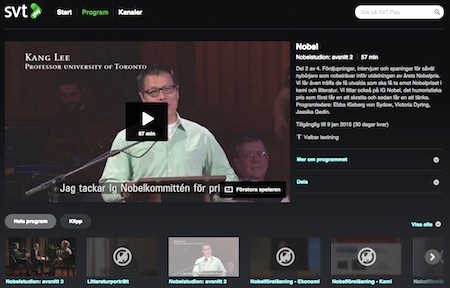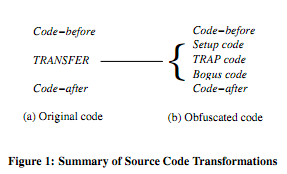Marc Abrahams's Blog, page 358
December 11, 2014
Frequency of Suboptimal Effort of Some Students
Some students sometimes don’t “give it their all“, suggests this paper:
“I Just Want My Research Credit: Frequency of Suboptimal Effort in a Non-Clinical Healthy Undergraduate Sample,” Jonathan DeRight and Randall S. Jorgensen [pictured here], The Clinical Neuropsychologist, epub December 10, 2014. (Thanks to Vaughan Bell for bringing this to our attention.) The authors, at Syracuse University, explain:
“The current study utilized an embedded measure of effort… to determine the frequency of poor effort in non-clinical healthy undergraduate students participating in a research study for course credit. Results indicate that more than 1 in 10 college students participating in a cognitive test battery for research showed test scores consistent with inadequate effort, which was associated with poor performance on testing across many domains. This conclusion was supported by poor performance on many other subtests. Healthy college students with suboptimal effort (n = 11) had an overall score in the 15th percentile on average compared to the 48th percentile in the rest of the students (n = 66). Those who failed validity indicators on the baseline administration were more likely to fail validity indicators on the repeat administration. Those who were tested in the morning were also more likely to fail validity indicators.”
Some students sometimes do, suggests this October 26, 2014 news report, also from Syracuse, New York:
5,000 students give it their all in Carrier Dome to find out who are the best marching bands in New YorkMore than 5,000 high school students, along with an estimated 10,000 fans, packed the Carrier Dome for the New York State Field Band Conference championships Sunday.
Fifty marching bands came to town to compete and determine who is the best. For each band, months of practice all came down to a 7- to 10-minute performance. A panel of 10 judges evaluated each band on its musical and visual presentation.
December 10, 2014
Profiling the IJIRS journal
 Gopal Chakraborty, B.Sc (Physics Hons.), M.Sc (Physics), CWD, PHD (Pursuing), Assistant Professor of Physics, GKCEM, JIS GROUP, is the editor-in-chief of an unusual academic publication entitled : The International Journal Of Innovative Research and Studies (ISSN: 2319-9725).
Gopal Chakraborty, B.Sc (Physics Hons.), M.Sc (Physics), CWD, PHD (Pursuing), Assistant Professor of Physics, GKCEM, JIS GROUP, is the editor-in-chief of an unusual academic publication entitled : The International Journal Of Innovative Research and Studies (ISSN: 2319-9725).
It’s unusual in several respects – in that it’s a monthly, multidisciplinary, international, English language journal, with zero-level plagiarism tolerance, using a double blinded review process – and it’s open-access.
“International Journal of Innovative Research and Studies is a brisk multidisciplinary educational research platform providing those individuals an ideal intricate opportunity to accomplish their desires who long for a refined betterment in their respective arenas. Designed to usher the sublimity around the glob we engage our noble efforts for the enlightenment of multidisciplinary issues contemplatively. We bring forth this electronic journal monthly and promote the vivid research entries with precise and apt touches and by bridging the gulf between perception and the inception. Join us to sail beyond horizons or to ride beyond stars for bring off contouring destinies.”
Its mission :
“IJIRS is an unique advantageous platform for those who wish to venture vast in multidisciplinary sphere. Equiped with the usurp experts and advanced by their priceless endeavours IJIRS is the best place for meticulous kit outs.”
Some example papers:
• Probabilistic Analysis of A Two-Unit Cold Standby System with Partial Failure, Ordinary and Expert Repairman
• Solid Waste Disposal: A Modern System of Garbage Disposal in Lovely Professional University, Phagwara
• Technique for Remove Unusefull State of Deterministic Finite Automata
• Brain Based Learning Strategies
Prospective authors can find submission guidelines here : (Note that there is a minimum publication fee of US$75)
December 9, 2014
In the midst of important things: SVT’s Ig Nobel snippets
This year, Swedish live TV coverage of Nobel Week is spiced with (unrelated but delightful) Ig Nobel snippets.
Interspersed in their traditional dignified, lengthy coverage of the grand Nobel Week events in Stockholm, the Swedish television network SVT is broadcasting bits of something rather different, unrelated, and delightful-if-not-exactly-pertinent: brief reports about several of this year’s Ig Nobel Prize winners.
Take a look at part of it. Click this link (or the image below) to go to SVT’s web site. An Ig Nobel segment begins around the 27 minute point in the recording:
PR headline: “Young bar patrons more likely to smoke”
Today’s PR Headline of the Week is from a press release issued by the American Public Health Association:
Young bar patrons more likely to smoke and use multiple tobacco productsNew Orleans – Smoking prevalence among young adults who frequent bars is at least twice the rate of smoking found among young adults in the general population, according to new research presented today at APHA’s 142nd Annual Meeting….
“These findings are important…,” authors of the study explain.
(Thanks to investigator Bruce Rolfsen for bringing this to our attention.)
Arisia: Nominate a reader for our Jan. 17th event

Calling all Arisia fen: Improbable Research will return to Arisia on January 17, 2015 and we’re asking the fen to help us find the best people to present some of our research papers.
What qualities should the person you nominate have to be a reader at this event?
Charismatic stage presence
A good speaking voice
Able to read clearly into a microphone
Not easily rattled when asked strange questions about a research paper they have only just read themselves
(and most importantly) Attending Arisia on Saturday Jan 17, 2015
The event at Arisia will include a number of brief, dramatic readings from studies and patents that have won an Ig Nobel prize. Shortly before this event begins, we supply our Readers a selection of papers to choose between.

Do you know someone who should be illuminated by The Human Spotlight? (photo by D. Kessler)
They choose one, and then find the portions of it they want to read – or present in some other dramatic manner – to the audience.
Each presentation will be 2 minutes long, after which the Reader may (if they wish) entertain questions from the audience. In answering these questions, they may draw from the paper or from their personal experience. They may surmise or deflect, but they must not lie.
NOMINATIONS
If you know people like this then please go to our nomination page and tell us that they would be good readers for this Ig-Arisia event.
If you would like to know people like this, then head to our nomination page to see who has already been nominated.
We encourage you to nominate attendees, staff, vendors, or other unexpected people who would do a good job (see the list of qualities, above).
Binary obfuscation using signals, for the confused
Are you (or is someone you know) a bit confused about binary obfuscation using signals? This report could help, one way or another:
“Binary Obfuscation Using Signals,” Igor V. Popov, Saumya K. Debray, Gregory R. Andrews, 16th USENIX Security Symposium, pp. 275–290 of the Proceedings. The authors are, or were, at the Department of Computer Science, The University of Arizona, Tuscon.
Figure 1 [reproduced here] is most illustrative:
December 8, 2014
Food Guns (new patent)
A newly patented invention (Nov. 4th, 2014) could perhaps be loosely described as a ‘Food Gun’. As the drawings show, it’s not only aimed at pets, but is also applicable, say the inventors, to zoo animals.
“In an example, a dog owner can launch a dart shaped projectile according to the present disclosure intended to entice their dog(s) to fetch and eat as a form of exercise and nutrition. In addition to pets, projectiles of the present disclosure can be used to feed other wild and domestic animals, in wilderness areas, or on farms, ranches, wild game park reserves, or at zoological parks. Zoos can provide safe stationary launching devices to allow visitors to shoot (i.e., launch) food into the animal exhibits to encourage the animals to exercise while also providing meals or treats. This also provides for an entertaining and interactive experience for the zoo patrons.“
The patent notes that the launcher could also be configured to fire other edible projectiles, e.g. ‘Flying Discs’.
See the full patent: ‘Projectile pet food‘
Note: The patent doesn’t mention any human food-delivery applications, but does cite, “Homemade Biodegradable Nell Darts, forums.humansvszombies.org ” Improbable has been unable, as yet, to retrieve and verify the source.
December 7, 2014
Sharp look at Iggy fluid-dynamics
For fans of randomization: Effect of Vaginal Electrical Stimulation
If you find randomization to be stimulating, we suggest you read this study:
“Effect of Vaginal Electrical Stimulation on Female Sexual Functions: A Randomized Study,” Serdar Aydın, Çağrı Arıoğlu Aydın, Gonca Batmaz and Ramazan Dansuk, The Journal of Sexual Medicine, epub December 3, 2014. The authors, at Bezmialem Vakif University and at Liv Hospital, Istanbul, Turkey, explain:
METHODS. Forty-two women… The probe was inserted, and a medium-frequency (50 Hz) alternating current was administered for a duty cycle of 5 seconds on followed by a 5-second rest.
CONCLUSIONS. The lack of significant difference… puts into question the effectiveness of electrical stimulation as a monotherapy…
Here’s further detail from the study:
(Thanks to investigator Ivan Oransky for bringing this to our attention.)
Hair Club member Brian May revivifies stereo photography
Brian May, a member of the the Luxuriant Flowing Hair Club for Scientists (LFHCfS), is helping to revive and revivify the Victorian-era delight in stereoscopic photography. He and colleagues are bringing new life to a once-defunct organization, the London Stereoscopic Company. Here is an example of stereo cards, which were and are at the heart of the delight:

Dr. May (who is an astrophysicist and a musician), explains briefly, in this video:
BONUS: Some of Dr. May’s earlier work, on a different subject:
Marc Abrahams's Blog
- Marc Abrahams's profile
- 14 followers







